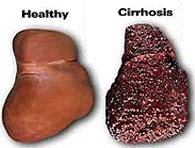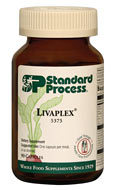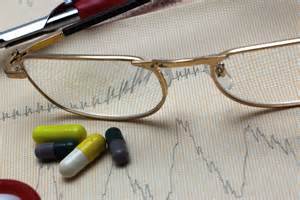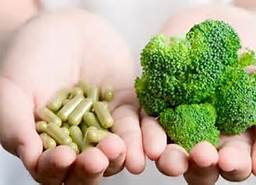Cirrhosis

|
Rabbi Harold Kushner |
Cirrhosis is the twelfth leading cause of death by disease, accounting for 27,000 deaths each year. The condition affects men slightly more often than women. Cirrhosis is a complication of many liver diseases characterized by abnormal structure and function of the liver. The diseases that lead to cirrhosis do so because they injure and kill liver cells, after which the inflammation and repair that is associated with the dying liver cells causes, scar tissue to form. Alcohol and viral hepatitis B and C are common causes of cirrhosis, although there are many other causes. It is a condition in which the liver slowly deteriorates and malfunctions due to chronic injury. A healthy liver is able to regenerate most of its own cells when they become damaged. With end-stage cirrhosis, the liver can no longer effectively replace damaged cells.
A healthy liver is necessary for survival. The liver is an important organ in the body. It performs many critical functions, two of which are producing substances required by the body, for example, clotting proteins that are necessary in order for blood to clot, and removing toxic substances that can be harmful to the body, for example, drugs. The liver also has an important role in regulating the supply of glucose (sugar) and lipids (fat) that the body uses as fuel. In order to perform these critical functions, the liver cells must be working normally, and they must have an intimate relationship with the blood since the substances that are added or removed by the liver are transported to and from the liver by the blood.
The relationship of the liver to the blood is unique. Unlike most organs in the body, only a small amount of blood is supplied to the liver by arteries. Most of the liver's supply of blood comes from the intestinal veins as the blood returns to the heart. The main vein that returns blood from the intestines is called the portal vein. As the portal vein passes through the liver, it breaks up into increasingly smaller and smaller veins. The tiniest veins (called sinusoids because of their unique structure) are in close contact with the liver cells. In fact, the liver cells line up along the length of the sinusoids. This close relationship between the liver cells and blood from the portal vein allows the liver cells to remove and add substances to the blood. Once the blood has passed through the sinusoids, it is collected in increasingly larger and larger veins that ultimately form a single vein, the hepatic vein, which returns the blood to the heart.
- Why in cirrhosis blood bypasses the liver
- Why there is disturbed relationship between the liver cells and bile
- Why digestion in the intestine is reduced
- How cirrhosis impairs the liver's ability to function properly
- Symptoms and signs of cirrhosis
- Complications of cirrhosis











